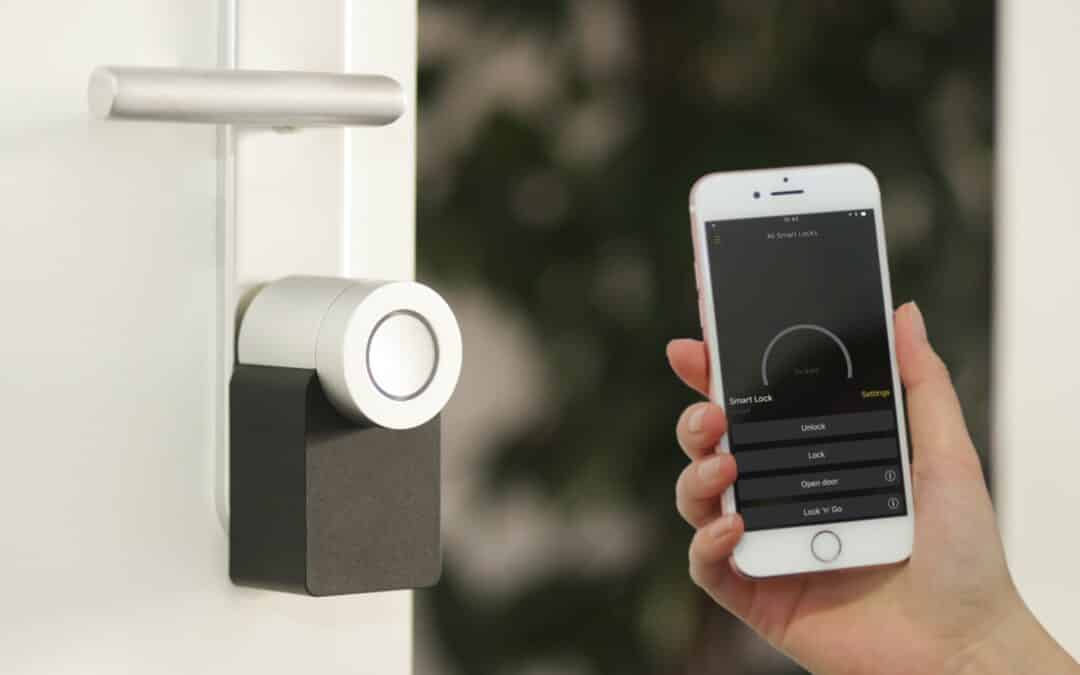Maintaining a high level of physical security for your business is paramount, which is why you like to go the extra mile. Rather than only using alarms and CCTV cameras, you also have reinforced locks and ID scanners that read a card and allow the holder into the building.
Smart.
Unfortunately, these features still have bugs that are hard to fix, such as issuing new cards and keys to changing the locks on your premises. Thankfully, access control systems offer a solution – digital access credentials. Instead of using physical tools, you can download an app to your smartphone to make your building even safer. Imagine the simplicity of just emailing a credential to a new employee or Vendor.
How Do Access Control System Smartphone Apps Work?
An access control system smartphone app is similar to a traditional key card in the sense it gives access to anyone who has the correct permissions. The main difference, of course, is that the software is stored on your phone or mobile device and not carried on your person, i.e. in your pocket or around your neck.
To do this, digital access control systems typically include a selection of essential properties.
They are:
- NFC/Bluetooth: NFC and Bluetooth are the channels phones use to transmit and receive signals. You already know how Bluetooth works, but Near Field Communications is a little different as you need to stand closer to the receiver for it to work. However, NFC uses less power, while its shorter range is a security bonus since it’s harder to intercept the signal.
- Storage: Apps almost always store data in the cloud or a secure server. It should never leave the information on the phone itself because handsets use less robust protocols, leaving your data open to thieves.
- Badges & Cards: Why do they provide physical tools when the app is smartphone-based? It’s because not everyone has a smartphone. If some of your team members don’t, and you can’t afford to invest in company cells, you’ll require a card or badge to ensure they have access to the building.
While the features above may vary based on which provider you use, you’ll find that these three are constants.
How Will It Help Your Business?
The very fact that the app is located on a person’s phone makes it less likely that the data will be shared openly. When you think about it, it’s not rare for people to say, “here, take my card,” when a colleague or client doesn’t have one. The trust is implicit, yet it may be misplaced as the more a card is handed out, the more vulnerable the business becomes.
Phones are assets that people don’t want to lose, which is why they don’t give strangers access in the same way. Also, if you or an employee loses a device, it’s still protected via multi-factor identification principles, such as a PIN, thumbprint, or facial recognition. Once a badge goes missing, the person who finds it has access to your building.
Finally, smartphone access control systems are a fraction of the cost of standard solutions. Not only is replacing a lost or broken card expensive in the long-term, but it’s also a waste of time. Devices negate the time you’ll spend issuing and replacing access keys as managers can provide them remotely without having to travel. Plus, if an employee does lose their handset, it’s backed up in the cloud and easy to transfer from one device to another.
What Features Should You Search for in a Building Security App?
Apart from the extra security your business requires, you must ensure you choose a control program that fits your needs. For example, some software makes you add cables or network access to your credentials. However, certain providers can eliminate this frustrating process by providing a program that stands alone.
Also, don’t forget about integration. If you use a legacy system, the operating functions must work seamlessly, so you may have to search for a setup that is flexible and versatile. To figure out what is suitable, you can:
- Write down why you’re doing it
- Note which elements stand out and why
- Test it to see if your employees will accept the technology
- Ask suppliers why their products and services are safe
This should help you to target a smartphone program that’s tailored to your specifications.
How to Make the Access Control System App More Secure
There are pitfalls, which is why you need to make your app more secure.
- Place the main lock controllers on the inside of the door to protect from tampering.
- Collect data to understand why mistakes happen, such as someone entering an area they shouldn’t.
- Make sure the Bluetooth feature can’t be played back.
- Make sure that the mobile phone devices are protected by a PIN or other form of locking the device
- Delete access once an employee or guest leaves the organization.
There are smartphone apps for building security, and they are incredibly powerful when used correctly.
Get a hold of Red Mountain Technology Solutions to see what options may be available for your building and stop handing out those badges! 435-627-2990 or sales@red-mtn.com

